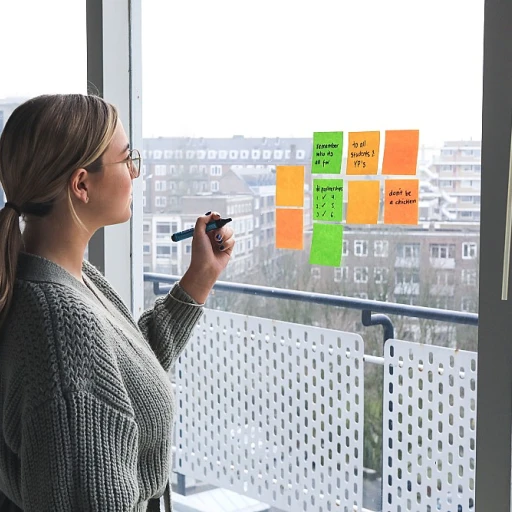Understanding the Importance of Employee Retention in Collections
The Necessity of Retaining Talent in Collections
The collections sector, like any other, relies heavily on the expertise and stability provided by a well-retained workforce. Employee retention is not just about keeping the staffing numbers stable—it directly impacts a company's effectiveness in managing collections, influencing both the bottom line and the company culture.
High employee turnover can lead to operational disruptions, increased training costs, and a loss of valuable skills. This not only affects the company financially, but also the morale of remaining team members. Effective retention strategies become critical to maintaining a stable work environment where employees feel valued and supported.
The Implied Impact on Employee Engagement
In the debt collection industry, employee engagement is crucial. Engaged employees are more committed to their roles and contribute positively to the organization's culture. A positive work culture fosters greater job satisfaction and encourages long-term commitment from the workforce. Companies that invest in creating a nurturing and inclusive environment typically see a decrease in turnover rates.
Creating a Supportive Work Culture
Ensuring a positive work culture aligned with flexible work options and career development opportunities can enhance employee retention. These elements serve as the backbone of any successful retention strategy. By focusing on enhancing engagement retention and providing platforms for development opportunities, organizations can retain top talent who contribute to the prosperity of the company.
To delve further into these strategies and learn about real-world applications, you can explore our detailed insights on retention initiatives in action.
Challenges in Employee Retention within the Collections Sector
Overcoming Hurdles in Employee Retention
The collections sector is uniquely challenging when it comes to employee retention. The intense nature of debt collection work can lead to elevated stress levels, often resulting in employee turnover that affects team stability and long-term success. This demands effective retention strategies from managers to build a positive work environment. Firstly, the mainstream challenges revolve around the demanding work that debt collectors face on a daily basis. Employees are often required to engage with customers in difficult situations, necessitating high-level communication skills and emotional resilience. Without proper support and feedback, even top talent may feel overwhelmed, contributing to turnover rates. Moreover, the company's culture and work environment significantly impact employee engagement. Organizations that do not prioritize diversity and inclusion, flexible work opportunities, or career development pathways may struggle with retention. Ensuring that team members see a path for growth within the organization boosts job satisfaction and employee engagement over time. Feedback and development opportunities are crucial in keeping employees motivated. Companies that encourage regular feedback and provide clear avenues for skill development can alleviate some challenges of collections work. Engaged employees who feel valued are more likely to stay and contribute positively to the organization. It is essential for organizations to recognize the importance of these strategies in enhancing work life and reducing employee turnover in the sector. Crafting effective retention strategies not only fortifies the workforce but also promotes a thriving company culture where employees feel empowered and connected to their roles. For insights on creating an impactful environment for employees and fostering employee engagement, check out guidance on crafting an effective training enablement specialist resume that aligns with your organization’s goals.Role of Continuous Learning in Employee Retention
The Transformative Impact of Continuous Learning
Continuous learning is an integral component in enhancing employee retention, particularly in sectors like collections where challenges abound. In today's dynamic work environment, providing employees with ongoing learning opportunities greatly contributes to lowering turnover rates and ensuring job satisfaction. Implementing continuous learning initiatives within an organization not only enhances employees' skills and knowledge but also fuels their engagement and motivation. A team that feels supported in their career development is more likely to stay with the company long term, reducing the burden of constant recruitment and training. Employees who perceive that their company is invested in their personal growth and professional advancement are typically more productive and deliver higher performance. These engagement retention strategies foster a positive work environment, where diversity inclusion and communication are paramount. When employees tap into continuous learning, they are better equipped to handle the challenges of debt collection, resulting in a higher level of job satisfaction and ultimately leading to enhanced employee retention. Top organizations are recognizing this trend and integrating continuous learning as a cornerstone of their retention strategies, helping cultivate a company culture that values and nurtures its talent pool. By sustaining an environment where employees feel valued and challenged, companies can significantly increase retention rates. For those looking to implement or enhance continuous learning programs, preparing one's mind and body for the journey ahead can be crucial. For more information on how to lay this groundwork effectively, consider reading this guide on preparing for learning opportunities.Implementing Continuous Learning Programs
Creating a Positive Work Environment with Learning Opportunities
Implementing continuous learning programs is a cornerstone of creating a positive work environment and fostering employee engagement in collections. Such initiatives can transform the company culture, helping employees feel valued and motivated, which ultimately reduces employee turnover. To integrate continuous learning effectively, an organization must first assess the current work culture and identify development gaps. This observation will guide the creation of a tailored learning environment that addresses specific employee needs and retention strategies. The goal is to cultivate an atmosphere where team members feel encouraged to develop their skills and pursue career development. Here are some best practices for implementing continuous learning programs:- Diverse Learning Opportunities: Offering a variety of learning methods, such as workshops, e-learning modules, and mentorship programs, helps address different learning styles and preferences, enhancing engagement retention.
- Flexible Work Options: Encourage work-life balance by allowing employees the flexibility to manage their learning schedule around their work tasks. This flexibility can lead to higher job satisfaction and long-term commitment to the company.
- Feedback and Development Sessions: Regular feedback sessions provide employees with performance insights and highlight areas for improvement, making them more invested in their growth and retention within the organization.
- Recognition and Rewards: Recognizing achievements and offering incentives for completing learning objectives can increase buy-in and enthusiasm for personal development endeavors.
Measuring the Success of Retention Strategies
Evaluating Retention Strategies Outcomes
In the endeavor to enhance employee retention within the collections sector, it is crucial for organizations to systematically assess the effectiveness of their strategies. These evaluations help in understanding the impact these initiatives have on not only retaining employees but also on their overall job satisfaction and engagement. To effectively measure the success of retention strategies, consider the following key metrics:- Turnover Rates: By tracking turnover rates over time, organizations can gauge the effectiveness of their retention strategies. A decline in turnover is often indicative of successful strategies, where employees feel valued and motivated to remain with the organization.
- Employee Engagement Levels: Implement surveys and feedback tools to measure how engaged your team members are. Higher engagement often correlates with effective communication, professional development opportunities, and a positive work environment.
- Job Satisfaction Scores: Regularly assess job satisfaction levels through surveys and direct feedback. These scores can reveal insights into possible areas of improvement, contributing to a tailored and successful retention strategy.
- Feedback and Communication: Create channels for open communication where employees can provide feedback on implemented strategies. This not only informs management of potential areas needing adjustment but also fosters a culture of trust and transparency.
Case Studies: Successful Retention Strategies in Collections
Real-World Illustrations of Retention Strategies in Collections
Examining successful examples can be an eye-opener when analyzing the effectiveness of retention strategies, especially within the collections industry. These organizations effectively integrated continuous learning and other retention strategies, resulting in improved employee retention and engagement.- A Large Collections Agency: This company faced significant employee turnover due to the high-stress nature of the work environment. To address this, they implemented a comprehensive development and career pathway program. The initiative emphasized professional development opportunities, fostering a culture that encourages feedback and communication. The result was a significant decrease in turnover rates as employees felt more engaged and valued, pinpointing the positive work environment created through continuous learning.
- Medium-Sized Debt Collection Firm: By integrating flexible work schedules and promoting a work-life balance, this organization managed to boost employee satisfaction. Managers played a crucial role by frequently communicating with team members, offering feedback, and recognizing top talent. The firm also prioritized diversity and inclusion, ensuring all team members felt part of the company culture. This created a nurturing environment that supported collaboration and long-term employee retention.
- Nationwide Credit Collection Company: Focusing on employee engagement retention, this company invested in technology-driven solutions that supported diverse learning styles. By adopting best practices tailored to individual learning preferences, they significantly enhanced job satisfaction and professional development. Through tailored retention strategies meeting the varied preferences of employees, the organization noted a marked improvement in corporate culture and reduced turnover rates.








